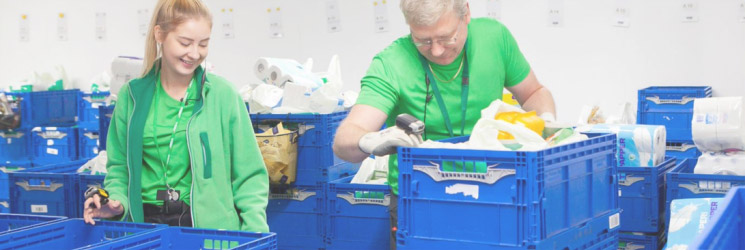

Employment relationship
Maternity leave, paternity leave and parental leave
Please note:
Family leave was renewed on August 1, 2022. Up-to-date information can be found on the page Pregnancy and parental leave.
Maternity leave
Maternity leave lasts for 105 working days.
Maternity leave starts 30 working days before and ends 75 working days after the due date.
Pregnant employees can also choose to go on maternity leave earlier, albeit no earlier than 50 working days before their due date. Maternity leaves that are started early also last a total of 105 working days.
Special maternity leave
A pregnant employee can, under certain conditions, be granted special maternity leave. An employee can be granted leave, if
- a chemical agent
- radiation or a contagious disease
- or another equivalent issue poses a risk to the employee’s health or that of the foetus, and this cannot be avoided in the work and the employer is unable to arrange other work tasks for the duration of the pregnancy.
The health implications of the employee’s working conditions are evaluated by the employer’s occupational health care provider, and eligibility for a special maternity allowance is decided by the Social Insurance Institution of Finland. Employees who are deemed eligible for the special maternity allowance are also entitled to special maternity leave. Special maternity allowance payments end if the risk in the employee’s working conditions can be eliminated or if their employment contract ends. Employees who are receiving a special maternity allowance cannot work for other employers.
Special maternity allowance payments can be made from the beginning of the employee’s pregnancy until they become eligible for a standard maternity allowance. The special maternity allowance is for the same amount as the standard maternity allowance, and it has no impact on the amount of the standard maternity allowance that will ultimately be payable to the employee. In a fixed-term employment relationship, you are only eligible to receive special maternity allowance during the term of employment.
Paternity leave
The maximum length of paternity leave is 54 working days in total.
New fathers can take between one and 18 working days off and receive a paternity allowance at any time during
The remaining paternity leave can be taken after the mother no longer receives a maternity allowance or a parental allowance. Alternatively, all 54 days of paternity leave can be taken after the maternity or parental allowance payments have ended.
All leave must be taken before the child’s second birthday. Paternity leave is not affected by the birth of another child or a child being adopted into the family during the eligibility period.
Parental leave
New mothers and fathers are entitled to up to 158 working days of full-time or part-time parental leave in total.
In the event of multiple births, the maximum length of parental leave is extended by 60 working days per child.
Parents can take turns in using up their parental leave allowance, in which case each parent can take their leave in up to two blocks of at least 12 working days each.
Working on maternity leave or parental leave
Working while receiving a maternity allowance is permitted with the employer’s consent, as long as the work and the working conditions do not put the mother or the baby in danger.
However, working is forbidden during the two weeks leading up to the due date and the first two weeks after childbirth. Both the employer and the employee can end the arrangement at any time.
Part-time work during parental leave
Employees who are receiving a parental allowance can agree with their employer to work part-time.
The terms of the arrangement and its termination and any changes to the terms must be agreed between the employer and the employee. If agreement cannot be reached, the employee has the right, for a valid reason, to stop working part-time and either continue their parental leave or resume their former working hours.
This website is part of the European Commission's Your Europe portal. Did you find what you were looking for?


